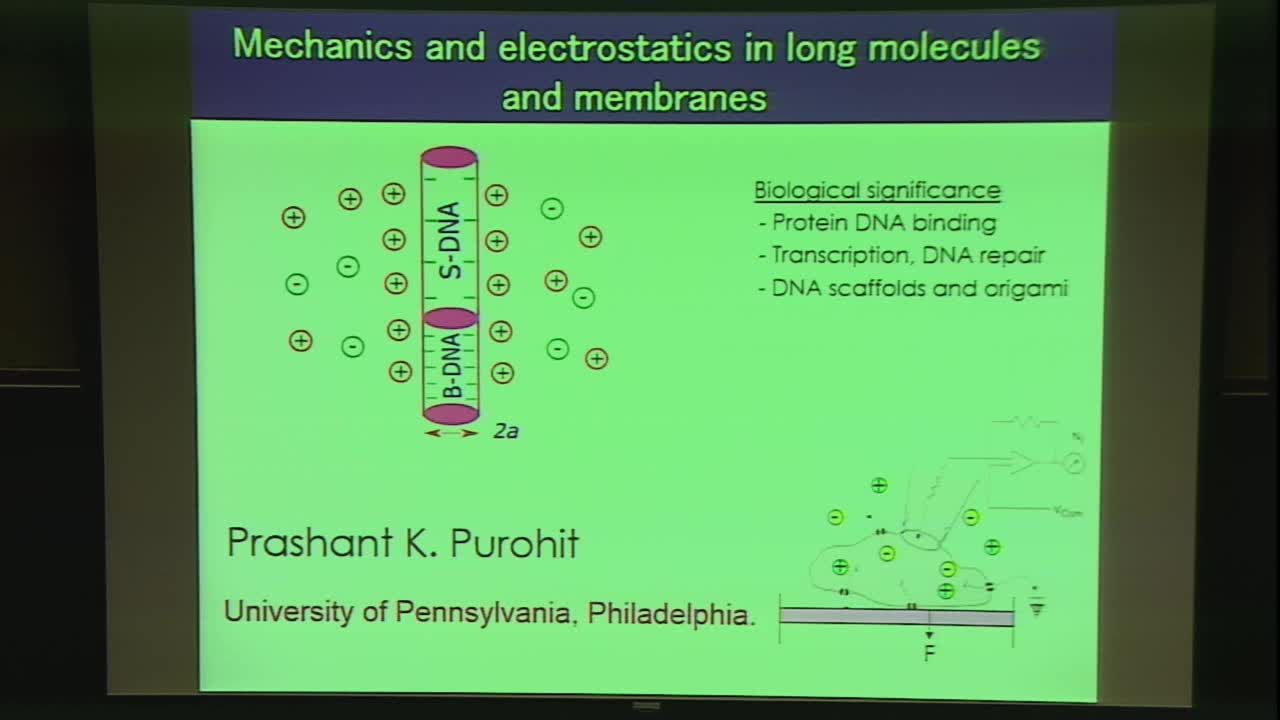Mechanics and electrostatics in long molecules and membranes
Presenter
March 13, 2018
Keywords:
- DNA, lipid membranes, phase transitions
Abstract
Biological macromolecules are often charged and perform their functions in ionic environments. For this reason the mechanical and electrostatic behavior of macromolecules are connected. In this talk we will shed light on the interplay of mechanics and electrostatics of rod-like macromolecules and cells. In the first part of the talk we will study the deformations of a cell constrained between two plates and subject to a change in potential difference across its membrane. Membrane flexoelectricity, which has its origins in the ionic environment of a lipid bilayer, causes a change in membrane tension, which then results in a shape change of the cell. In the second part of the talk we will consider electrostatic effects on phase transitions in a DNA molecule. We will consider torsionally constrained DNA under various ionic concentrations subjected to forces and torques. Our analysis is based on the statistical mechanical theory for helix-coil transitions with three phases, B-, S- and P-DNA. We will rationalize the non-monotonic dependence of external work done on the ion concentration by connecting it to the electrostatic dependence of the interfacial energy between two phases of DNA.
